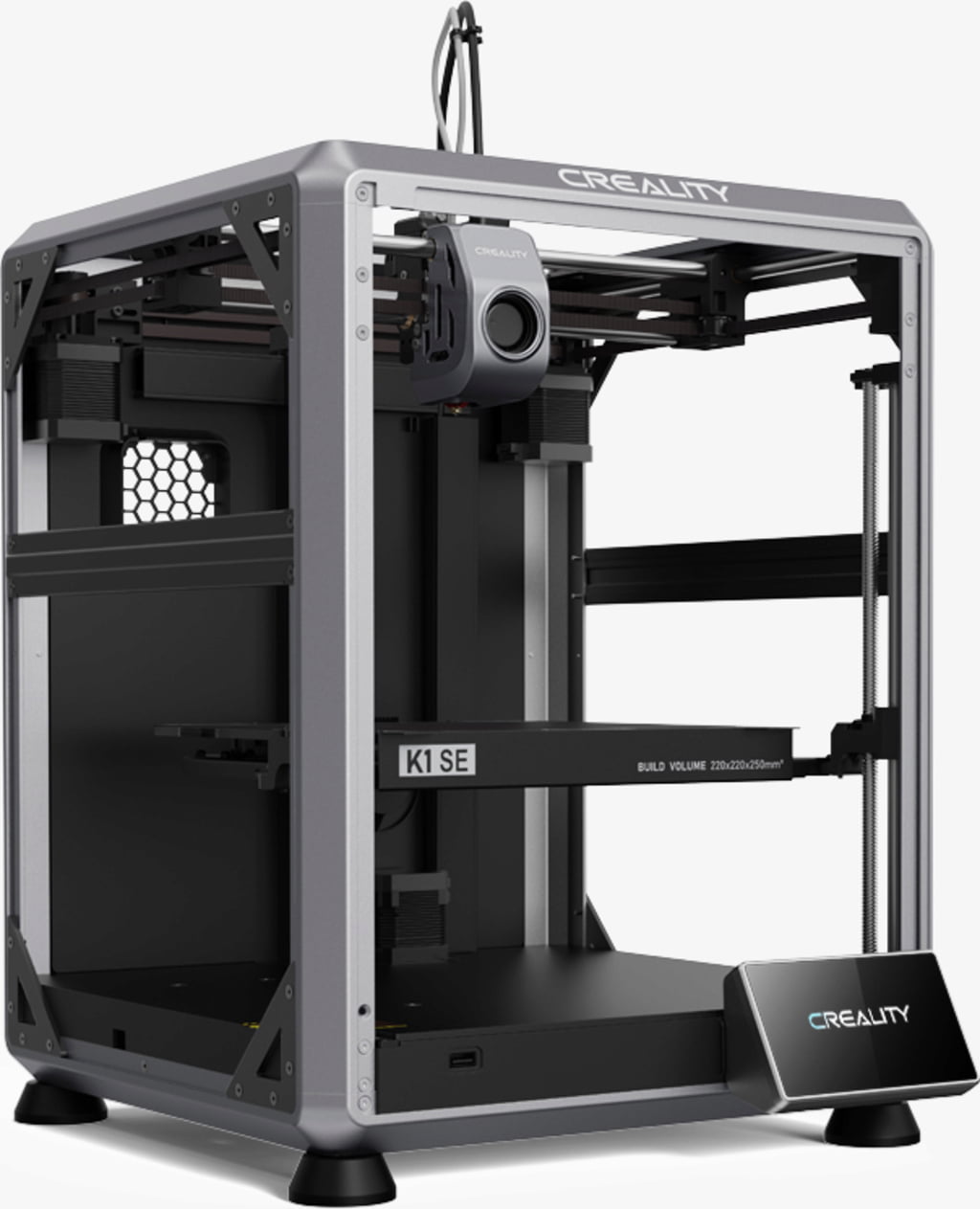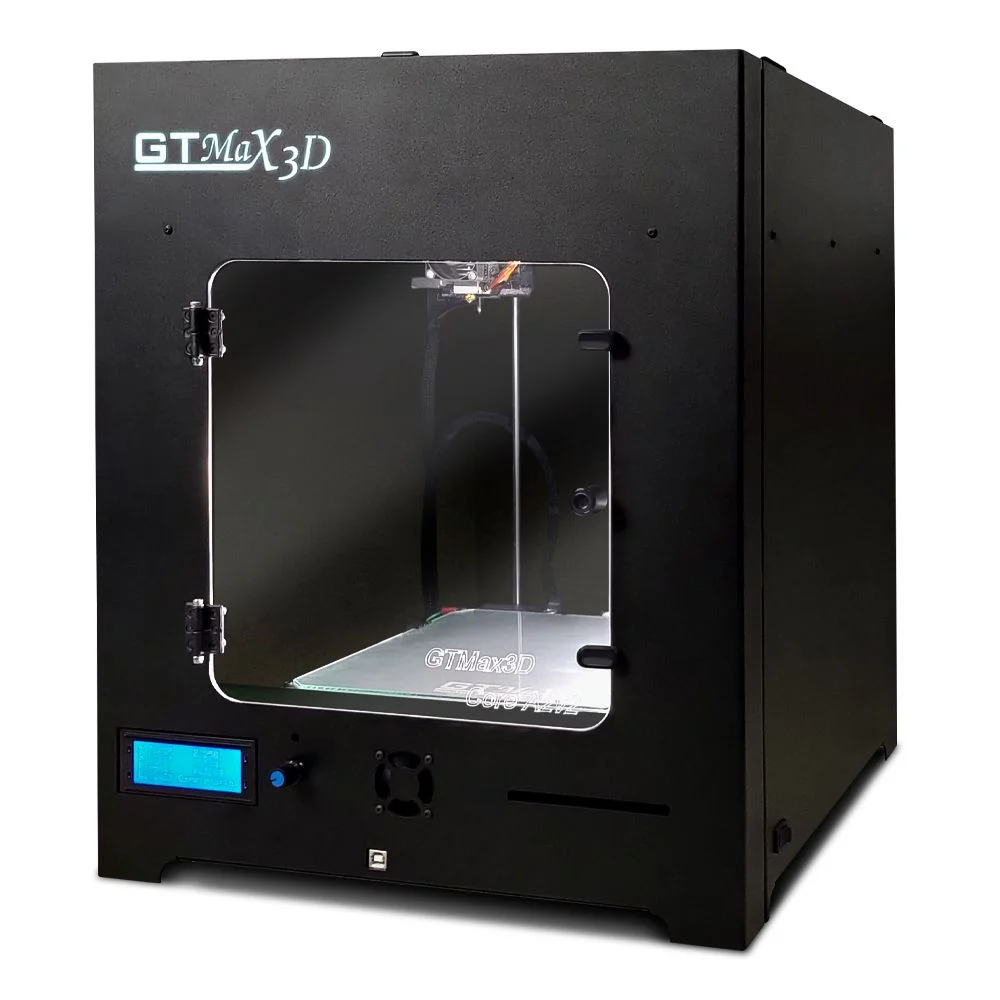Compare K1 SE vs Core A2V2
Comparison between the best 3D printers
Choose the best 3D printer at the best price. The cheapest 3D printers are here.
Buy a 3D printer here with 3D Fila.
 |
 |
|
| Model | K1 SE |
Core A2V2 |
| Printing Material | Filament | Filament |
| Buy Filament for Creality 3D K1 SE | Buy Filament forGTMax Core A2V2 | |
| Estimated price | $349,00 | $684,00 |
| Manufacturer | Creality 3D | GTMax |
| Release Year | 2023 | 2019 |
| Print Volume [mm] | 220x220x250 | 220x220x240 |
| Printer Size [mm] | 355x355x480 | 425x460x512 |
| Weight [kg] | 10,24 | |
| Power Loss Recovery | YES | YES |
| Enclosed printer | NO | YES |
| Bed Leveling | Automatic | |
| Filament End Sensor | YES | YES |
| Bed type | Heated | Heated |
| Power supply system | Direct Drive | Bowden |
| Standard nozzle | 0,4 | 0,4 |
| Maximum Nozzle Temperature [°C] | 300 | 295 |
| Maximum Bed Temperature [°C] | 100 | 135 |
| Maximum printing speed [mm/s] | 600 | 150 |
| Filament holder | YES | YES |
| Camera for supervision | YES | YES |
| Recommended filaments | Hyper PLA, PLA, PETG, PET, TPU | PLA, PETG, Tritan, Flex, ABS |
| Recommended slicers | Creality Print; Cura, Simplify3D e PrusaSlicer | Cura, Simplify, Slic3r, IdeaMaker |
| Maximum Resolution [mm] | 0,1 | 0,05 |
| Processor | ||
| Display | Display touchscreen 4,3'' | Mono |
| Power Supply | 110/220V / 350W | |
| Connectivity | Ethernet / USB / Wi-Fi | SD / USB |
| Operating systems | Windows, Mac, Linux | Windows, Mac, Linux |
| Date of registration in the system | 2023-08-26 | 2022-11-12 |
| Release date | 2023 | 2019 |
| Extra features | The Creality K1 SE is a high-speed 3D printer with CoreXY system, capable of printing at up to 600mm/s with acceleration of 20000mm/s². It has a dual-gear extruder, easy-to-replace tri-metal nozzle, automatic leveling, and advanced features such as vibration reduction algorithms and intelligent operation. Its rigid cast aluminum frame ensures stability, while the open-source Klipper-based system offers freedom for customization. It is pre-assembled for a simplified and fast user experience. | The GTMax3D ProCore A2v2 is a compact and robust 3D printer with a printing area of ??220 x 220 x 240 mm. It offers high print quality, ranging from 0.05 mm to 0.32 mm. Its features include automatic filament detection and changing, travel speed of up to 300 mm/s, and a heated aluminum bed with a glass top. It has automatic bed leveling with 16 points and an all-metal hotend that reaches up to 298°C. The printer has a carbon steel frame with electrostatic painting, is automatic bivolt and has connectivity via USB and SD card. The Bowden system and core xy kinematics complete its advanced features. |
| Support for multiple colors and materials (AMS and CFS) | NO | NO |
Notes * |
||
| Cost-benefit | 7 / 10 | 6 / 10 |
| Hardware | 3.5 / 10 | 2.5 / 10 |
| Tela | . | . |
| Print volume | 3 / 10 | 3 / 10 |
| Performance | 5 / 10 | 1 / 10 |
Conclusion |
| In comparing the Creality K1 SE and the GTMax Core A2V2 3D printers, several key factors emerge that can guide potential buyers in making an informed decision. The K1 SE stands out with its impressive print speed capability of up to 600 mm/s, making it suitable for users who prioritize performance and rapid prototyping. Additionally, it features a robust suite of modern functionalities, including automatic bed leveling, dual-gear extrusion, and a well-integrated camera for supervision, enhancing the user experience through simplicity and efficiency. Its lighter weight and smaller footprint also make it more manageable for users with limited space. Conversely, the GTMax Core A2V2, while more expensive, offers a more robust construction due to its enclosed frame and carbon steel body, potentially leading to better thermal stability during prints. With a lower maximum printing speed but high-resolution capability, it delivers quality—particularly at finer layer heights for intricate projects. Its advanced heating elements and double-layer aluminum bed promote excellent adhesion and print quality. From a value perspective, the K1 SE presents a more compelling cost-benefit ratio, offering impressive performance at a significantly lower price point. On the other hand, the Core A2V2’s higher price might be justified for users who prioritize durability and professional print quality over speed. Ultimately, the choice depends on user needs: for speed and efficient functionality at a better price, the K1 SE is favorable, while those looking for build quality and thermal performance may prefer the Core A2V2. |

